Contents
- What is Contemporary Style?
- What Does Contemporary Design Style Mean?
- Tips to Create a Contemporary Style in Your Home
- What is the Difference Between Modern and Contemporary Interior Design?
- Features and Advantages of the Contemporary Style
- Contemporary Style Kitchen
- Contemporary Style Living Room
- Contemporary Style Bedroom
- Contemporary Style Bathroom
- Contemporary Style Office
- Conclusion
In the ever-changing world of interior design, few styles capture the essence of the present as vividly as contemporary design. This style isn't just about what's in right now - it's about reflecting the here and now in a timeless and cutting-edge way. As legendary designer Charles Eames once said, "The details are not the details. They make the design."
But what exactly defines contemporary design, and how can you bring its transformative power into your home? This article will explore the elements that make contemporary style unique and offer a roadmap for creating incredibly inviting spaces. Whether you're a design fan or someone looking to refresh your living space, this journey through contemporary style will inspire you to see your home in a whole new light.
What is Contemporary Style?
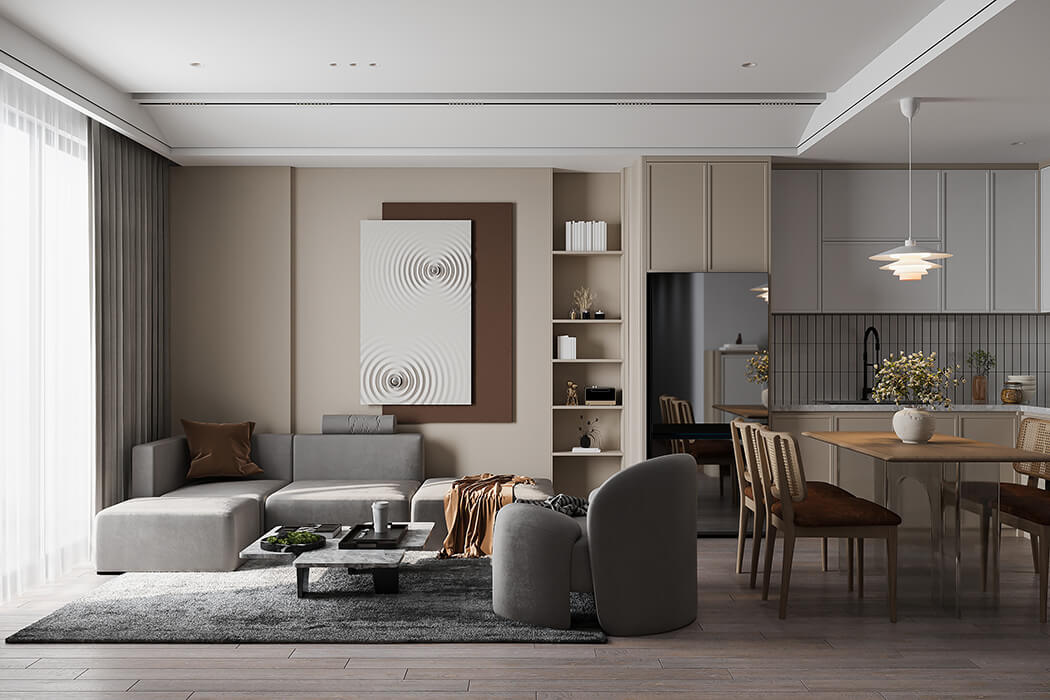
Contemporary style is a design philosophy that embodies the essence of the present moment. Unlike other design styles tied to specific historical periods, contemporary style is fluid and constantly evolving to reflect current trends, innovations, and tastes. It thrives on living in the now, embracing simplicity, clean lines, and a harmonious blend of form and function.
Contemporary design's roots can be traced back to the 1970s, when it emerged as a reaction to the more rigid aesthetics of Modernism, Postmodernism, and even Art Deco. At first, it was seen as an eclectic mix, borrowing elements from various popular styles. As it evolved, however, contemporary design forged its own identity, characterized by a minimalist approach, an emphasis on space, and neutral colors with bold accents.
What makes the contemporary style unique is its remarkable adaptability. As trends shift, so does the interpretation of contemporary design. This flexibility is one of its greatest strengths, ensuring that your spaces will always feel fresh and relevant, regardless of the decade. These interiors are characterized by streamlined silhouettes, a neutral palette, and a focus on light, space, and integrating natural elements.
Contemporary design has not only influenced our living spaces but has also significantly impacted popular culture. A-listers like Jennifer Aniston, known for her impeccable taste, have embraced contemporary design's clean lines and understated elegance. Kanye West and Kim Kardashian have also made headlines with their ultra-modern, minimalist homes, which embody the core principles of contemporary style—open spaces, natural light, and a monochromatic color scheme. This influence on popular culture can inspire you to bring contemporary design into your home.
These individuals further underscore the timeless appeal of contemporary design. From a Hollywood mansion to a New York penthouse, contemporary style offers a chic, sophisticated, and ever-evolving aesthetic that continues to captivate and inspire. Its ability to adapt and change with trends ensures that it will always remain a relevant and exciting design choice, giving you confidence in your design decisions.
What Does Contemporary Design Style Mean?
Contemporary design is more than just a trend—it reflects the present. This design philosophy embraces the simplicity of form, clean lines, and the ever-evolving nature of modern life. Unlike other design styles anchored in specific eras, contemporary design is dynamic, adapting to the latest trends and innovations while maintaining a timeless appeal. It's about creating spaces that feel fresh, current, and ideally suited to our lives today.
Tips to Create a Contemporary Style in Your Home
Color Palette
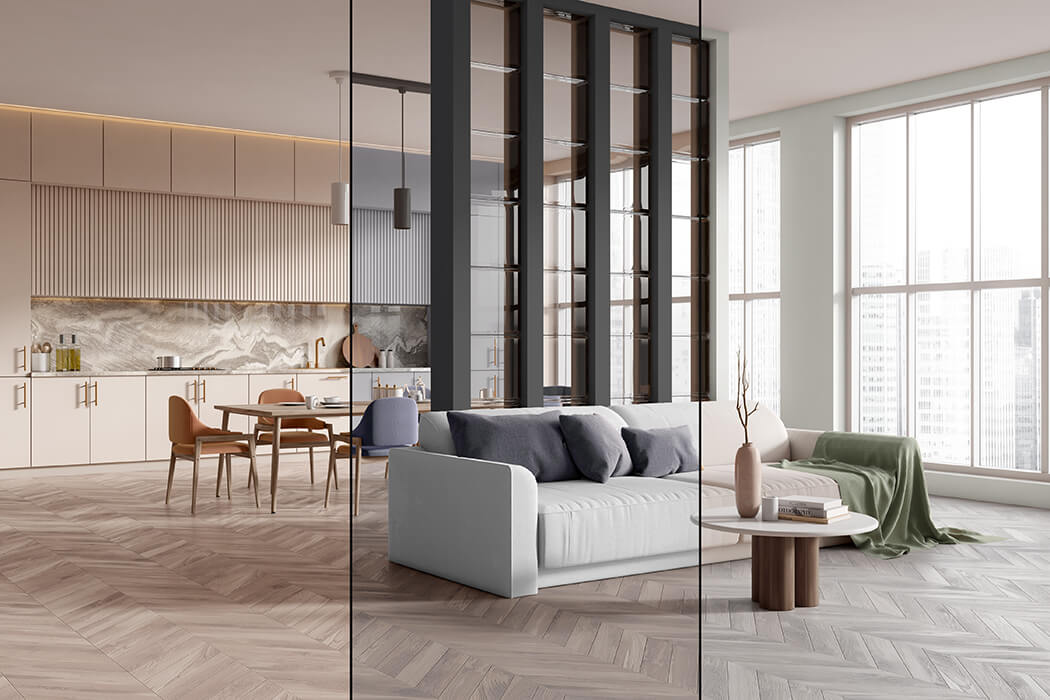
Contemporary design thrives on a neutral color palette, with shades of gray, black, white, and beige forming the foundation of any space. These colors create a serene backdrop, allowing the room's architecture and furnishings to shine. But don't be afraid to add bold accents-think vibrant throw pillows, an eye-catching rug, or a piece of statement art. These pops of color bring energy to the space without overwhelming it.
Furniture
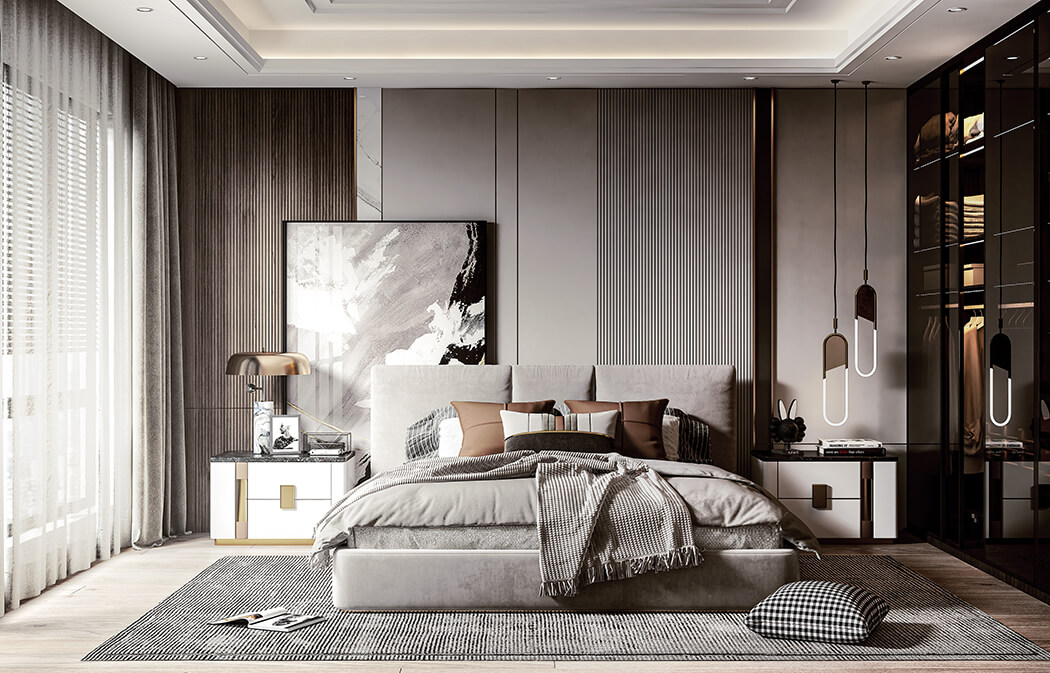
When selecting furniture, think sleek, simple, and functional. Its clean lines, geometric shapes, and smooth surfaces often define contemporary furniture. Opt for pieces with minimal ornamentation—choose a streamlined sofa with exposed legs, a glass coffee table with metal accents, or a bed with a simple headboard. Materials like leather, linen, and natural woodwork work well, adding texture without complicating the design.
Interior Doors
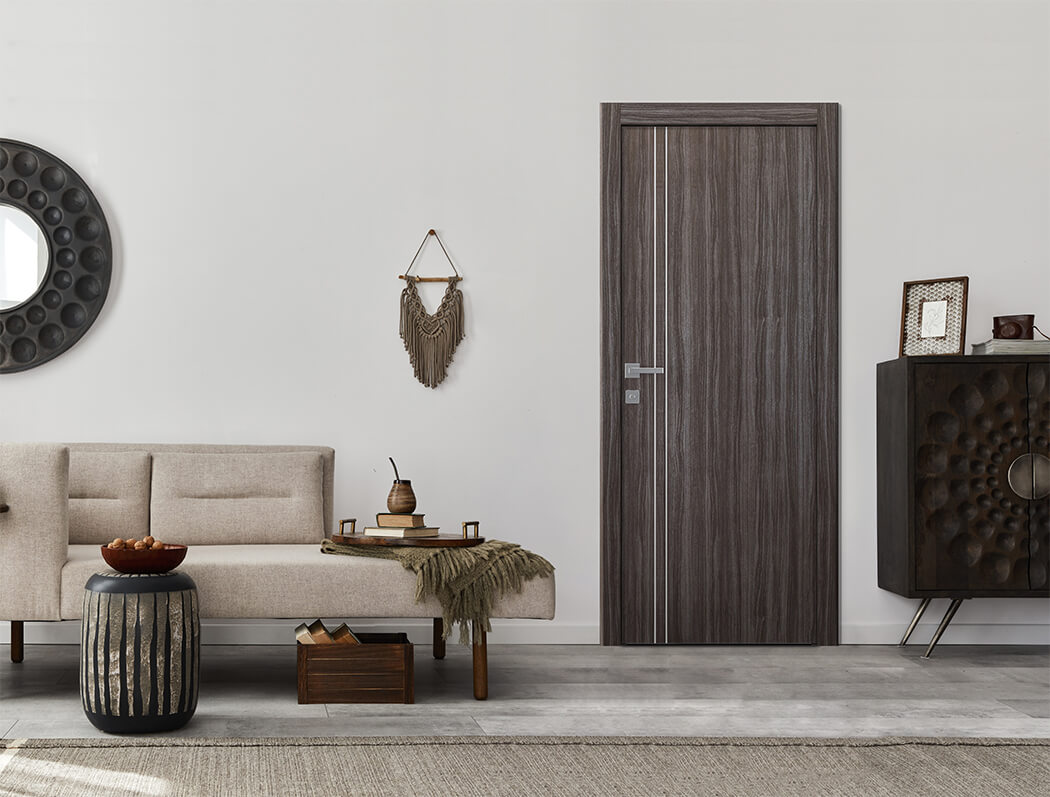
Interior Door Model: Unica 2V Gray Oak
Interior doors in a contemporary home should blend seamlessly with the overall design. Look for doors with clean, flat surfaces, and consider materials like wood, glass, or metal. Sliding systems or pocket configurations can be great options, as they save space and contribute to the sleek aesthetic. If you want to add a touch of sophistication, opt for doors with frosted glass panels or matte black finishes.
Flooring
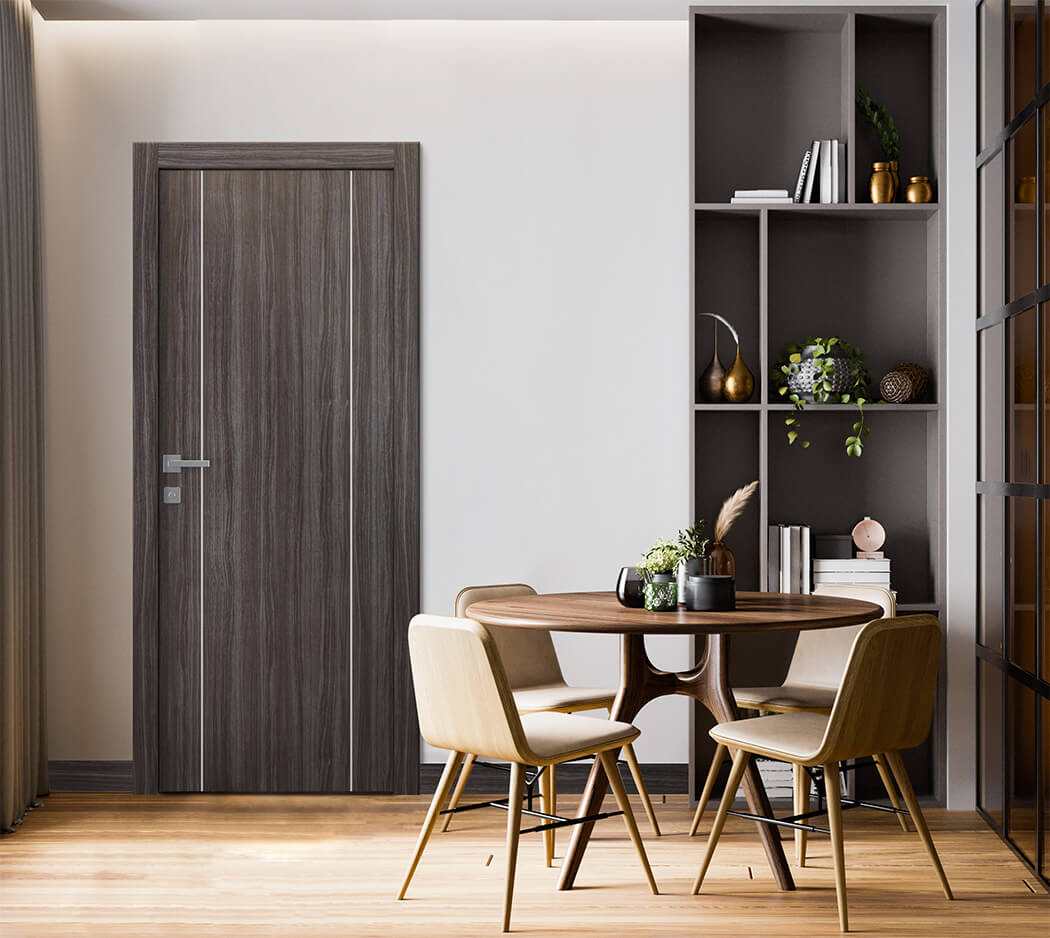
Interior Door Model: Unica 2U Gray Oak
Flooring in contemporary spaces is typically bare and smooth. Hardwood floors in light or dark finishes are popular, offering a timeless look that pairs well with any color scheme. If you prefer tile, use large, polished, neutral-toned tiles or even marble for luxury. Area rugs with simple geometric patterns can add warmth and texture without disrupting the space's clean lines.
Lighting
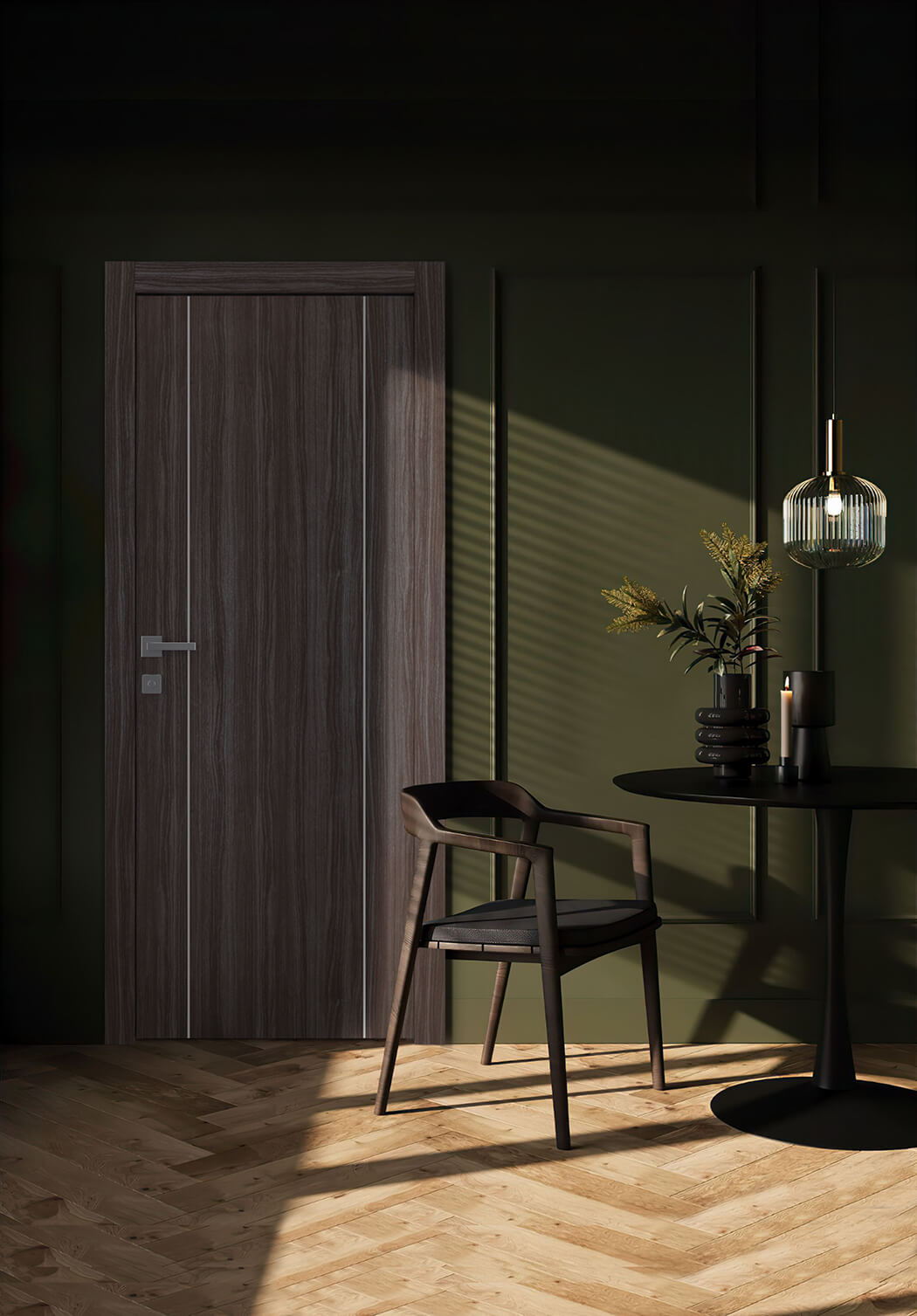
Lighting is crucial in contemporary design in terms of functionality and style. Recessed and track lighting are excellent choices, providing a clean, unobtrusive look while effectively illuminating the space. Consider pendant lights with metallic finishes or chandeliers with simple, modern designs. Floor lamps with sleek, minimalist forms can add to the overall aesthetic.
Artwork
Artwork is often a focal point, bringing personality to the room. Large-scale paintings or sculptures with bold, abstract designs are ideal for creating visual interest. Framing should be simple—think black, white, or metallic finishes.
Plants and Natural Elements
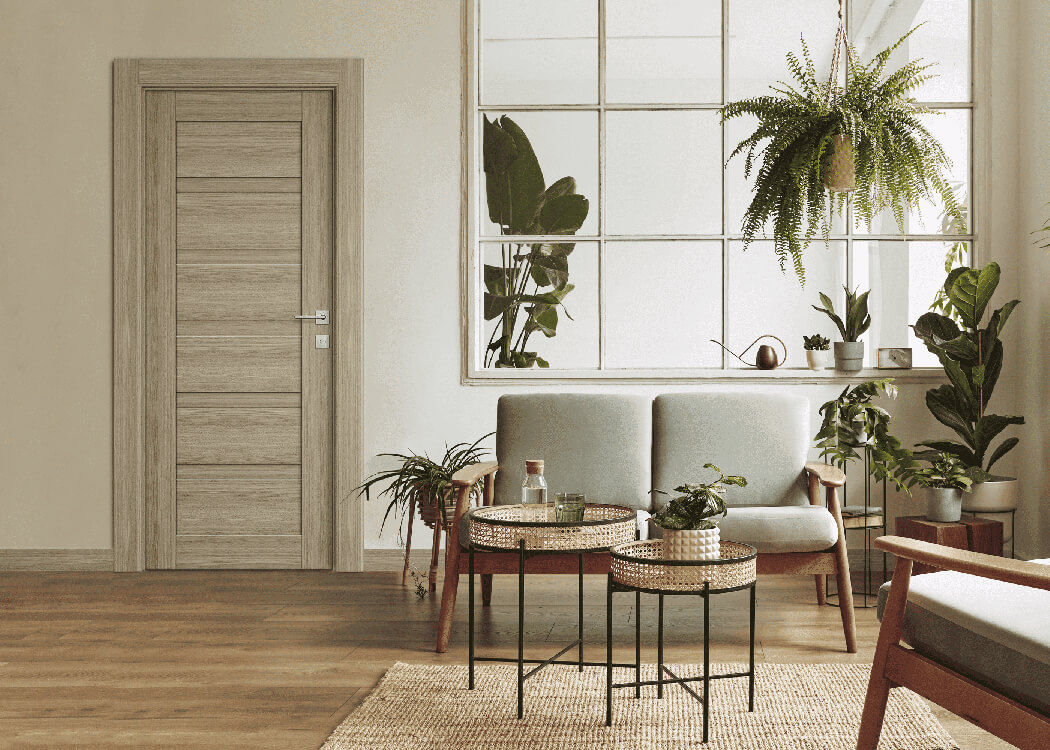
Interior Door Model: Louver Shambor
Plants are a fantastic way to add life and texture to a modern space. Favor large, showy trees or flowers. Containers should be simple and modern, made of ceramic, glass, or metal. If you place upward-pointing lights around these plants, this step will emphasize their beauty.
Additional Design Elements
Remember, in a contemporary space, less is more. This design philosophy emphasizes the importance of carefully selecting each piece for its ability to enhance the overall design without overwhelming it. It's about quality over quantity, and the beauty of simplicity. Each element in a contemporary space should serve a purpose and contribute to the overall aesthetic rather than cluttering the space.
What is the Difference Between Modern and Contemporary Interior Design?
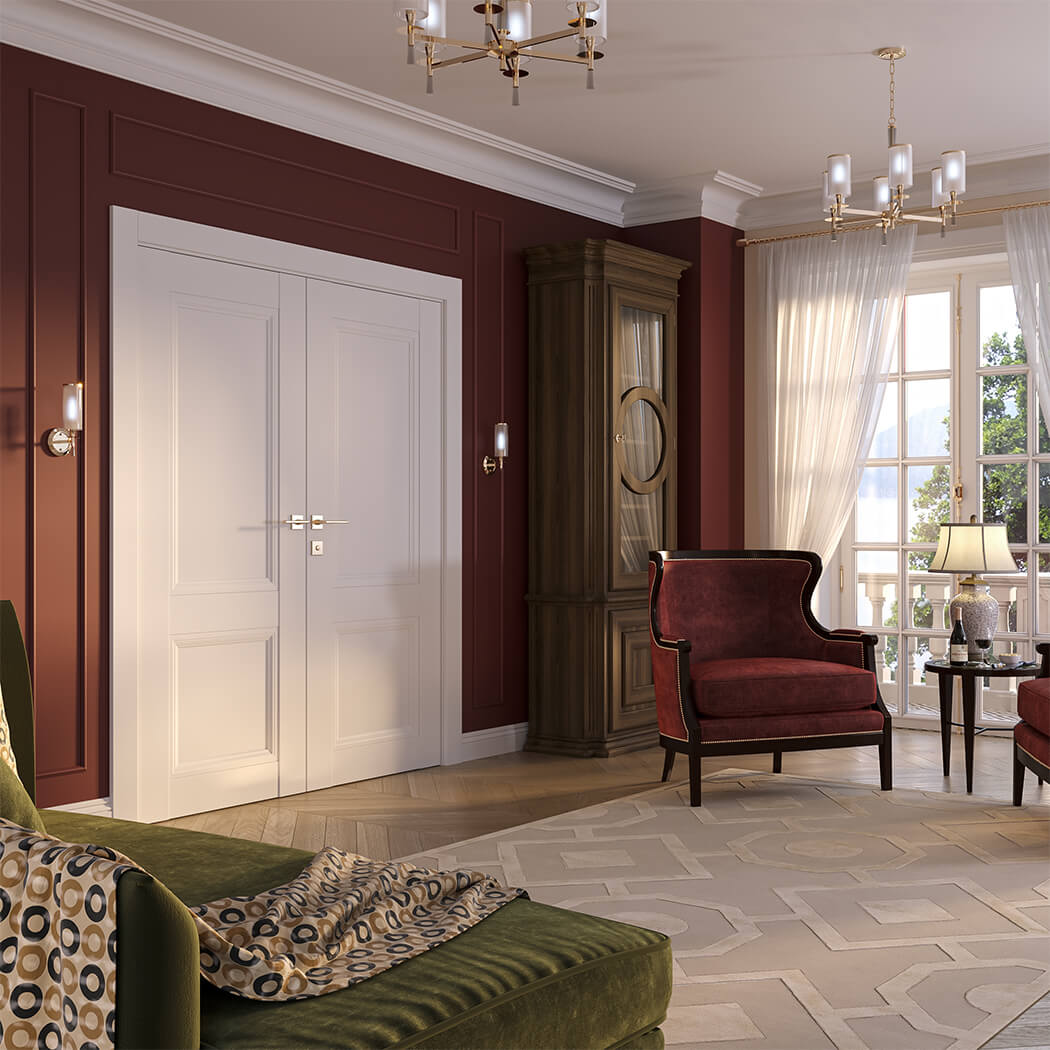
Interior Door Model: Shaker 2 Panel Snow White
Modern and contemporary interior designs may seem similar, but they are distinctly different in their origins and applications. Modern design is rooted in the early to mid-20th century, drawing inspiration from the Bauhaus and Scandinavian movements. It focuses on simplicity, functionality, and the beauty of natural materials like wood, leather, and stone. Characterized by clean lines and a neutral palette, modern design is timeless, representing a specific era's values and innovations. On the other hand, contemporary design is more fluid and constantly evolving, reflecting the current era's trends, innovations, and tastes. It's about living in the now, embracing simplicity, clean lines, and a harmonious blend of form and function.
In contrast, contemporary design is fluid and ever-evolving, reflecting the latest trends and technologies. Unlike modern design, which adheres to minimalism, contemporary spaces embrace bold contrasts, innovative materials, and a mix of textures. This style emphasizes open spaces and adaptability, with organic, curvy lines that reflect the present moment's dynamic nature.
Features and Advantages of the Contemporary Style
If you're drawn to clean lines, open spaces, and a minimalist aesthetic that still feels warm and inviting, contemporary design may be the perfect fit for your home. But what exactly makes this style so appealing? Let's explore the key features and advantages of contemporary style:
-
Simplicity and clarity: Contemporary design is committed to simplicity. This style eliminates the unnecessary, focusing on the essential elements of a space.
-
Versatility and adaptability: Because it isn't tied to a specific era, this style can quickly adapt to new trends, technologies, and personal tastes.
-
Focus on architectural elements: Clean lines, large windows, and open floor plans are all hallmarks of this style. By highlighting structural elements like exposed beams, concrete walls, or sleek metal staircases, contemporary design celebrates the beauty of the space itself.
-
Emphasis on light and space: Large, unobstructed windows flood the rooms with natural light, creating a bright and airy atmosphere. Additionally, open layouts maximize the flow of space, making each room feel more expansive and fluid.
-
High-quality materials and finishes: Using premium materials adds a touch of sophistication to your home and ensures that your space remains timeless and durable.
-
Timeless appeal: Unlike other design styles that may feel dated over time, contemporary interiors can easily be updated with new accessories, colors, or furniture pieces, keeping your home stylish and relevant for years.
-
An inviting minimalism: Contemporary style perfectly balances minimalism and comfort.
Contemporary Style Kitchen
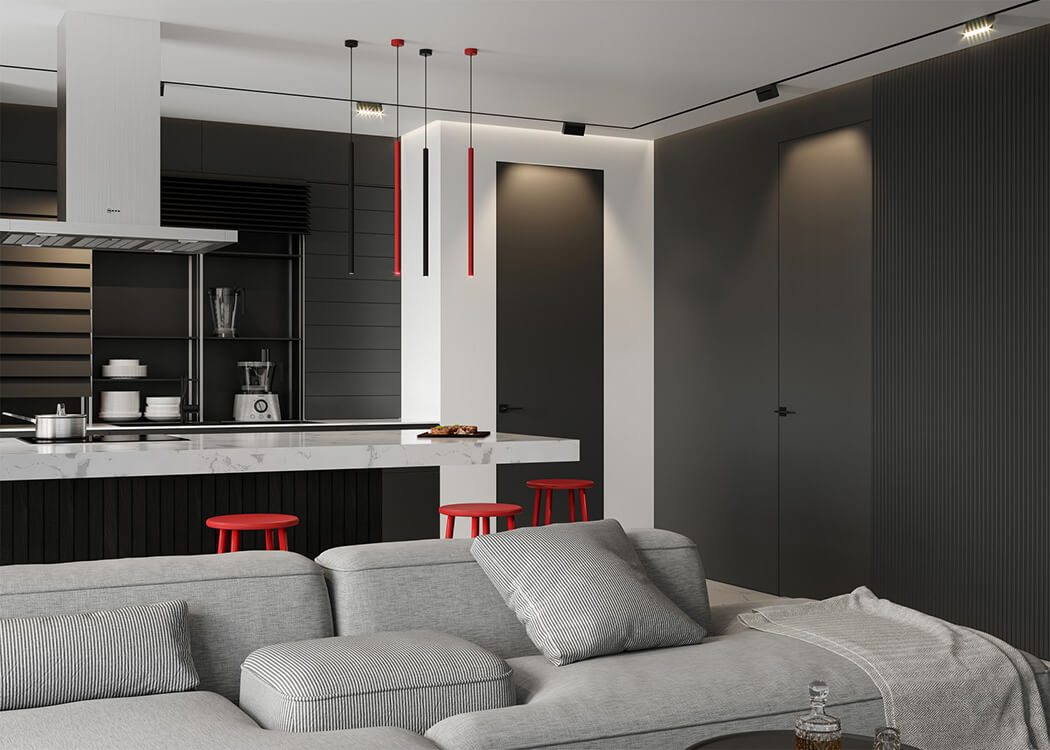
Interior Door Model: Optima Black Matte Frameless
The kitchen is the heart of the home, and in contemporary design, it's all about balance—merging functionality with understated elegance. A contemporary kitchen often features a neutral color palette of grays, whites, and soft earth tones, which creates a calm and clean atmosphere. Modern cabinetry with high-shine or matte finishes provides a sophisticated backdrop, while stainless steel appliances and sleek hardware add a touch of industrial chic. The focus is on simplicity, so opt for integrated appliances and ample storage solutions that keep surfaces clutter-free.
Contemporary Style Living Room
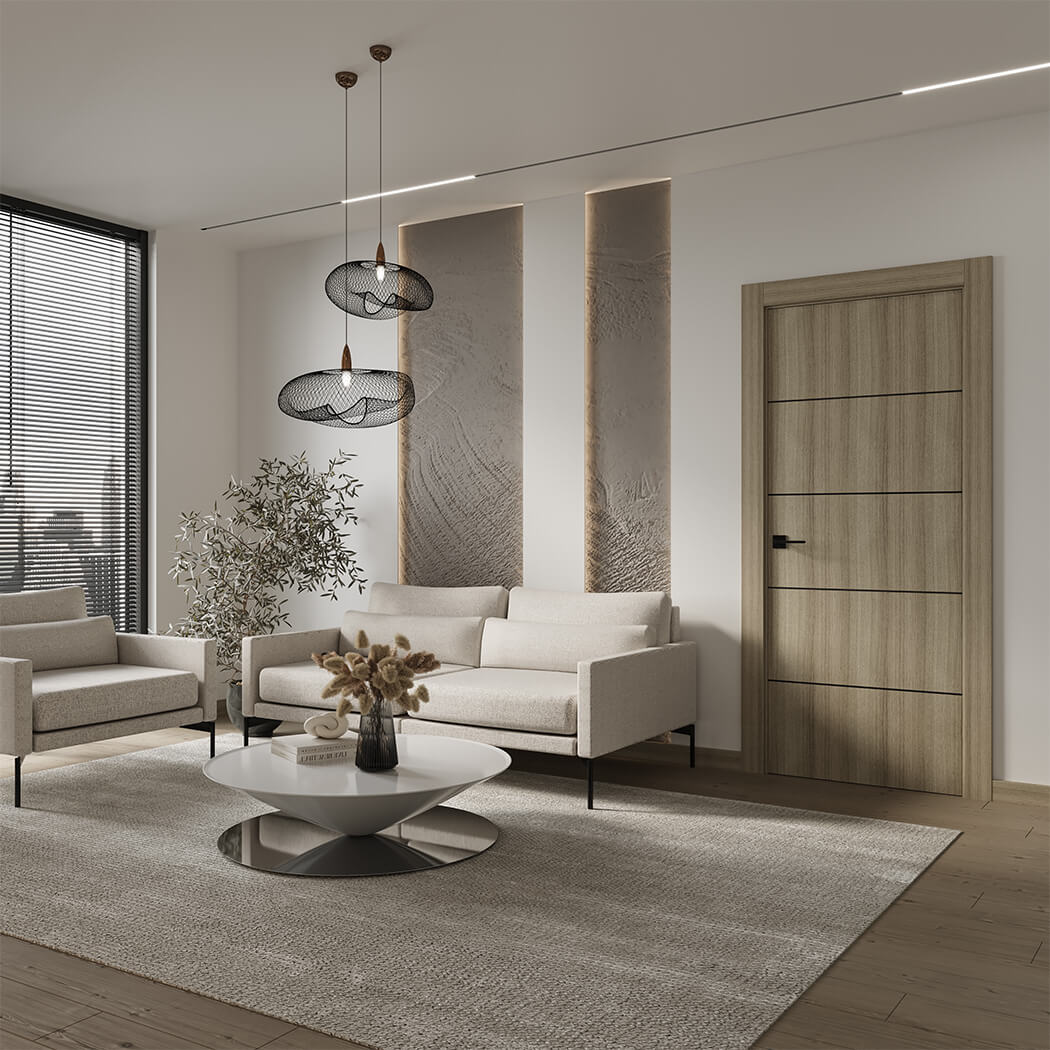
Interior Door Model: Optima 4H Shambor
Think of an open layout with a well-considered color palette—neutral tones with occasional pops of bold color through artwork or textiles. Furniture should be sleek and functional, with clean lines and geometric shapes that provide comfort without overwhelming the space. To add character, incorporate sculptural lamps, vases, and expressive artworks.
Contemporary Style Bedroom
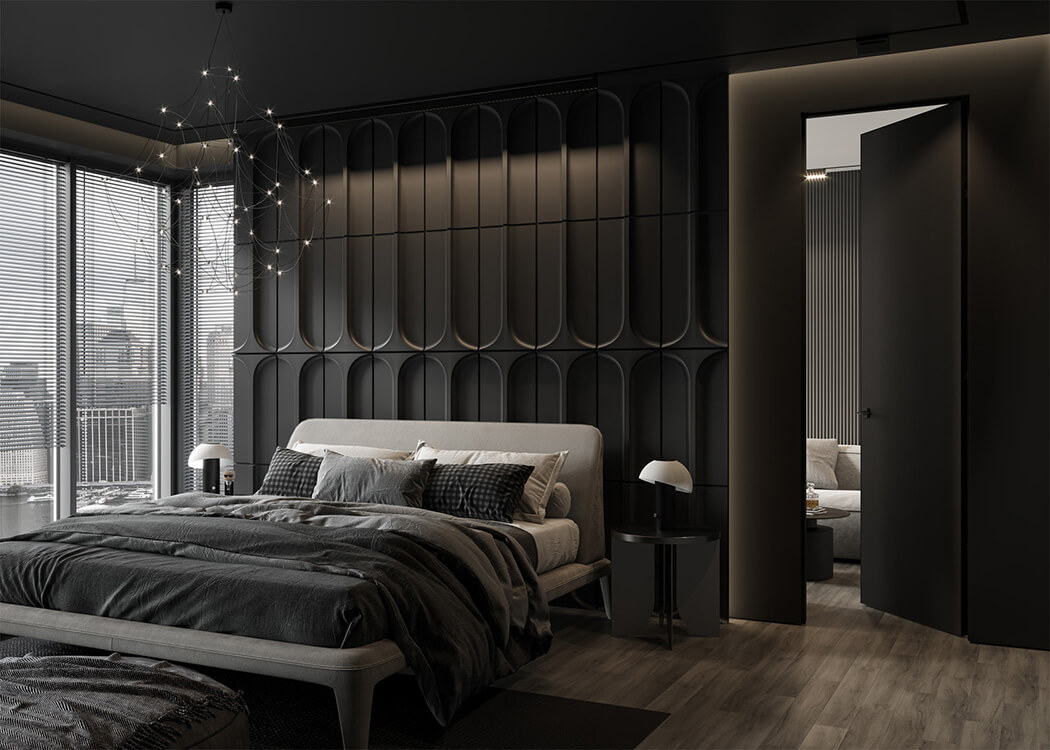
Interior Door Model: Optima Black Matte Frameless
A contemporary bedroom is a sanctuary of peace and relaxation, characterized by clean, straight lines and a calming color palette. Neutral tones like whites, grays, and soft beiges dominate, creating a serene atmosphere that promotes restful sleep. The key is in the details—use tonal textures through bedding, rugs, and throws to add warmth and depth. Avoid embellishments like tassels or ruffles; opt for simple, luxurious fabrics.
Contemporary Style Bathroom
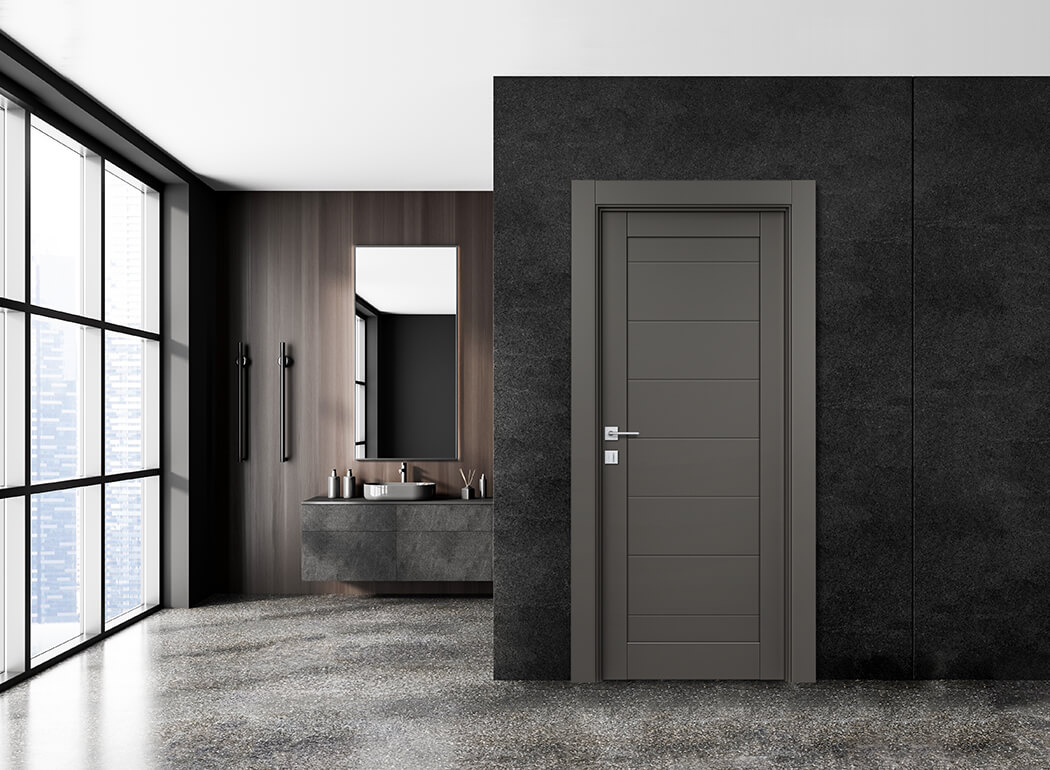
Interior Door Model: Ermi Black Matte
In a contemporary bathroom, the emphasis is on creating a clean, serene oasis. Think bright whites and soft grays paired with sleek, modern fixtures. Large, frameless mirrors and glass shower enclosures enhance the sense of space and light. To personalize the bathroom, consider unique, custom-designed fittings or bold, geometric tiles that add a touch of individuality without detracting from the overall simplicity.
Contemporary Style Office
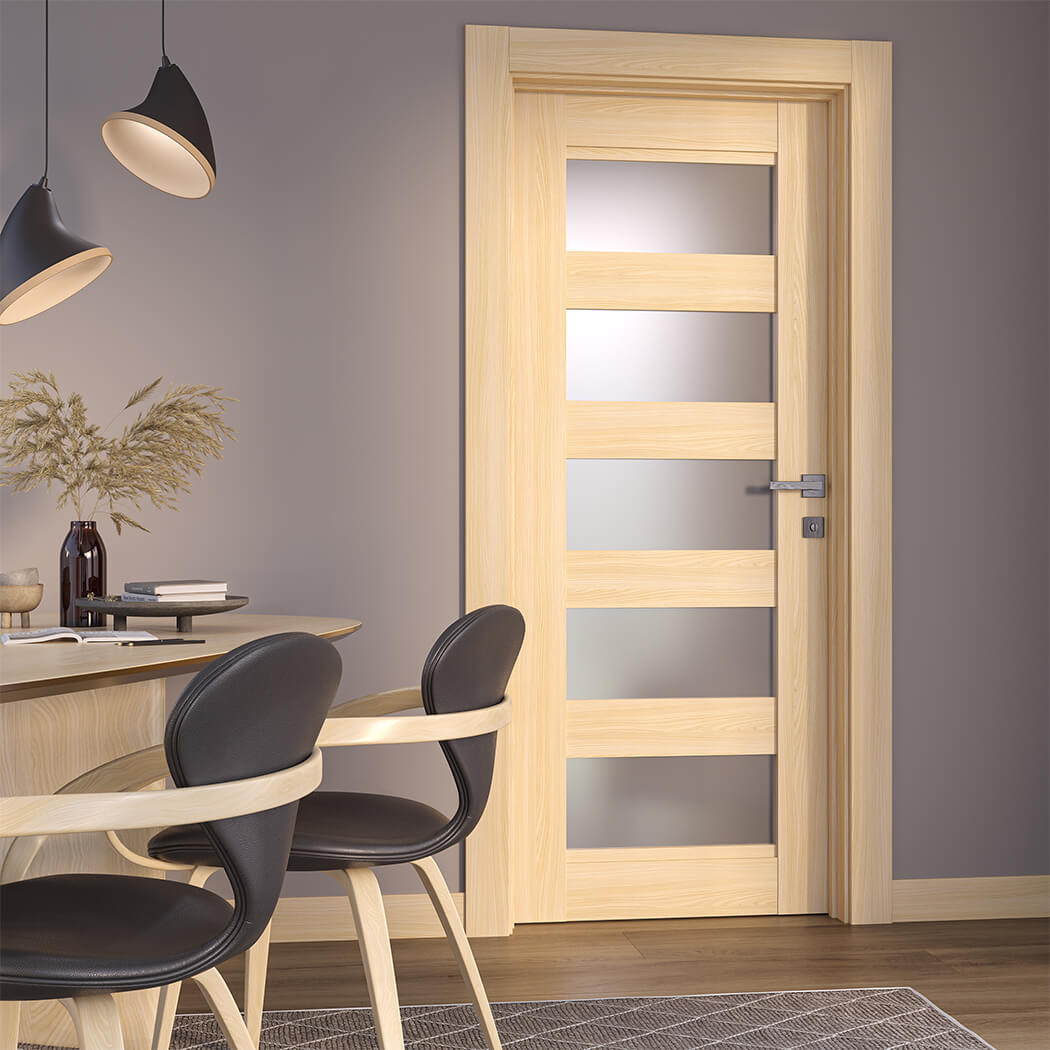
Interior Door Model: Avon 07-08 Vetro Loire Ash
A contemporary office is a carefully curated environment that fosters creativity, focus, and productivity. A backdrop of soft whites, grays, and muted earth tones creates a calming atmosphere, allowing you to concentrate on the task.
Furniture in a contemporary office is sleek and functional, with a strong emphasis on ergonomic design. A streamlined desk with a matte or polished surface provides a clean, clutter-free workspace. Paired with an adjustable, high-back chair, it ensures comfort during long work hours. Storage solutions, such as built-in cabinets or floating shelves, are designed to keep the space organized without disrupting the office's minimalist aesthetic.
Large windows maximize natural light, while adjustable task lighting and modern floor lamps provide the perfect illumination for focused work. For a touch of personality, consider incorporating a statement piece, such as a geometric light fixture or a piece of abstract art.
Technology integration is a key aspect of a contemporary office, ensuring a clutter-free workspace and enhancing productivity. Hidden cable management systems, wireless charging stations, and smart office solutions are seamlessly integrated, keeping the workspace free of unnecessary clutter.
Conclusion
Contemporary style is more than just a fleeting trend; it's a celebration of the present, a reflection of our times, and a design philosophy that honors simplicity, functionality, and elegance. As you explore the world of contemporary design, remember the words of the iconic architect Ludwig Mies van der Rohe, who famously said, "Less is more." This principle lies at the heart of contemporary style, where every element is carefully chosen to create beautiful and purposeful spaces.

